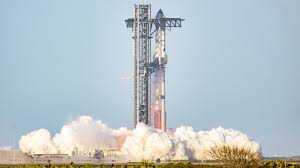
Breaking News
 Donald Trump's Energy Department Saved Your Appliances
Donald Trump's Energy Department Saved Your Appliances
 World's Smallest Pacemaker is Made for Newborns, Activated by Light, and Requires No Surgery
World's Smallest Pacemaker is Made for Newborns, Activated by Light, and Requires No Surgery
 Wind/solar motorcycle looks like an April Fools' joke ... but it's legit
Wind/solar motorcycle looks like an April Fools' joke ... but it's legit
 Barrel-rotor flying car prototype begins flight testing
Barrel-rotor flying car prototype begins flight testing
Top Tech News
 World's Smallest Pacemaker is Made for Newborns, Activated by Light, and Requires No Surgery
World's Smallest Pacemaker is Made for Newborns, Activated by Light, and Requires No Surgery
 Barrel-rotor flying car prototype begins flight testing
Barrel-rotor flying car prototype begins flight testing
 Coin-sized nuclear 3V battery with 50-year lifespan enters mass production
Coin-sized nuclear 3V battery with 50-year lifespan enters mass production
 BREAKTHROUGH Testing Soon for Starship's Point-to-Point Flights: The Future of Transportation
BREAKTHROUGH Testing Soon for Starship's Point-to-Point Flights: The Future of Transportation
 Molten salt test loop to advance next-gen nuclear reactors
Molten salt test loop to advance next-gen nuclear reactors
 Quantum Teleportation Achieved Over Internet For The First Time
Quantum Teleportation Achieved Over Internet For The First Time
 Watch the Jetson Personal Air Vehicle take flight, then order your own
Watch the Jetson Personal Air Vehicle take flight, then order your own
 Microneedles extract harmful cells, deliver drugs into chronic wounds
Microneedles extract harmful cells, deliver drugs into chronic wounds
 SpaceX Gigabay Will Help Increase Starship Production to Goal of 365 Ships Per Year
SpaceX Gigabay Will Help Increase Starship Production to Goal of 365 Ships Per Year
 Nearly 100% of bacterial infections can now be identified in under 3 hours
Nearly 100% of bacterial infections can now be identified in under 3 hours
SpaceX Starship Next Day Package Delivery Economics

People could be willing to pay 2X to 4X the price for ultrafast package delivery.
Current express delivery is about 17% of total packages but about 35% of the revenue. Express packages are about a $100 billion per year.
The current volume of express international package shipments over 3,000 miles is approximately 10 to 27 million tons per year Express international shipping rates for small packages are around $20-$30 per kilogram ($24/kg for a 1 kg package via DHL from China to the U.S.), though air freight rates are lower ($3-$7/kg).
Total global air cargo traffic is about 61 million tons annually (IATA, 2019), with express parcels as a subset (estimated 10-27 million tons).
It would be easy to reduce the time of shipment down to 2 days using fast shipments to centralized Starship launch towers on each continent. Packages for each of the other continental regions would be sorted.
Flights would be made every 4, 8, 12 or 24 hours depending upon the activity. Europe-US routes and Multiple Asia to US routes would have high activity.
There could be demand for about 30 to 50 SpaceX Starships flying daily routes if cost targets of $50 per kilogram or $20 per kilogram could be reached.
Once the systems reach about $5 per kilogram then is more about optimizing operations and maximizing revenue than worrying about per kilogram or per flight costs.
Here is some of the costs if the fuel costs are $250,000 per flight and $100,000 of per flight maintenance and amortizing the Starship costs over the reusage of the rocket.
It is more important to bring the cost of the Starship down than it is for more reuses of the rocket at certain levels.
A $300 million cargo plane with 125 tons of capacity, can fly 30,000 times. This means $10,000 per flight. A $5 million SpaceX Starship would need 500 reuses to also match the $10,000 per flight.
SpaceX Starship could achieve the lower cost because 6-9 Raptor engines could reach the $250,000 per engine target. The rest of the rocket is mostly Stainless Steel.
The table below is an approximation for an amortized cost with some fuel and maintenance estimates.
The $20 per kilogram cost is achievable and could require a fleet of 400 or so Starships with daily flights. Starships would fly anywhere in under an hour. Each Starship would be capable of flying back and forth 10 to 20 times per day. The issue would be getting enough packages loaded and to justify a partially loaded flight. Operating with mostly empty Starships would work if the higher tempo of operations enabled faster cycles and fewer hours to delivery.



